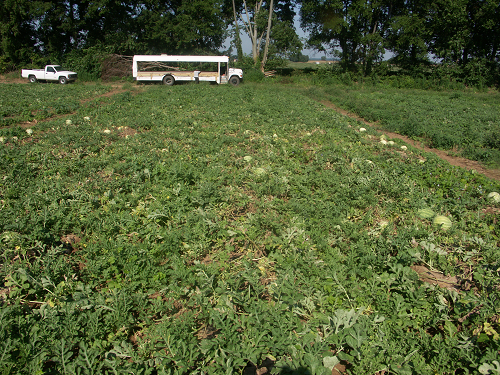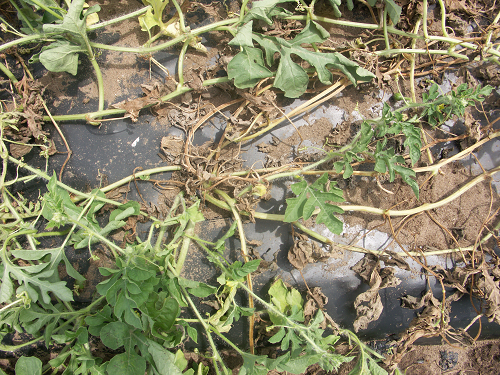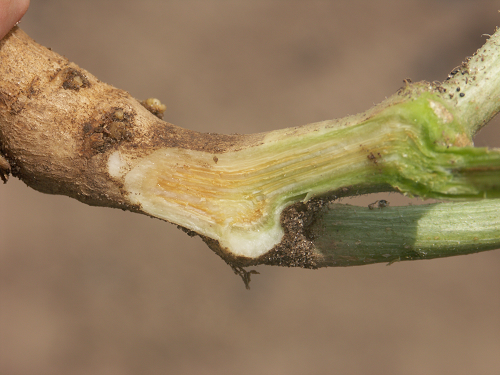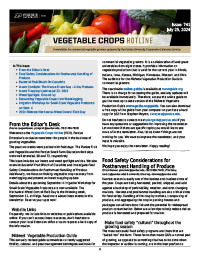Over the past few weeks, I have observed several watermelon fields with relatively large areas of wilted plants.There can be several reasons for such symptoms.In the article below, I will discuss late season Fusarium wilt of watermelon.In a separate article, I will discuss mature watermelon vine decline.In a separate article/blog I discussed root knot nematode.All of these diseases can cause wilt and decline of relatively large areas of cucurbits.
Fusarium wilt of watermelon is often observed when the vines are just starting to touch each other within a row. Sometimes, however, Fusarium wilt of watermelon does not show up until later in the season when the plants are near maturity. Fusarium wilt at this point in the season may cause a few vines to wilt (Figure 1). The distribution of affected plants is due to the distribution of the Fusarium fungus in the soil. Often well drained areas of the field are affected. This year, I have witnessed fields with widespread Fusarium wilt late in the season (see Figure 1). These vines were probably infected early in the season, but symptoms didn’t show up until later in the season.
To diagnose Fusarium wilt late in the season, find the crown of the plant. In many cases, some of the vines growing from the crown will be dead or wilted, while the other vines may be less affected (see Figure 2). The roots of plants affected by Fusarium wilt usually appear healthy. However, if the plant stem at the base is cut open, the inside reveals discolored vascular tissue (see Figure 3). (When the roots are dug up, be sure to check for root knot nematode.)
Management options for Fusarium wilt of watermelon do not include any late season alternatives. At this time of year, one should remember to plan a crop rotation from watermelon to a non-cucurbit crop. Earlier in the year, options include choosing hybrids with partial resistance and the use of Proline at planting and/or in irrigation water. For more information about Fusarium wilt of watermelon, see the Midwest Vegetable Production Guide for Commercail Growers 2014 (ID-56) and this bulletin https://www.extension.purdue.edu/extmedia/BP/BP-141-W.pdf.

Figure 1: Under the appropriate conditions, Fusarium wilt of watermelon
can cause large areas of commercial watermelon production
to wilt and decline. (Click image for larger view)

Figure 2: Mature watermelon plants affected by Fusarium wilt often have
some of the vines dead while others are still green.
(Click image for larger view)

Figure 3: The vascular system of watermelon plants affected by
Fusarium wilt are often discolored at the crown area.
(Click image for larger view)
